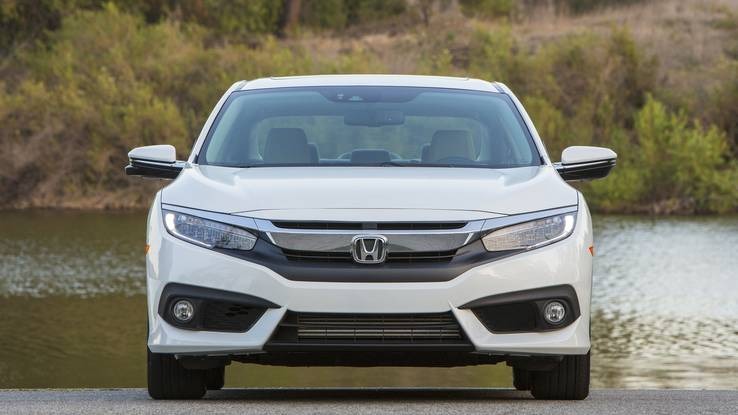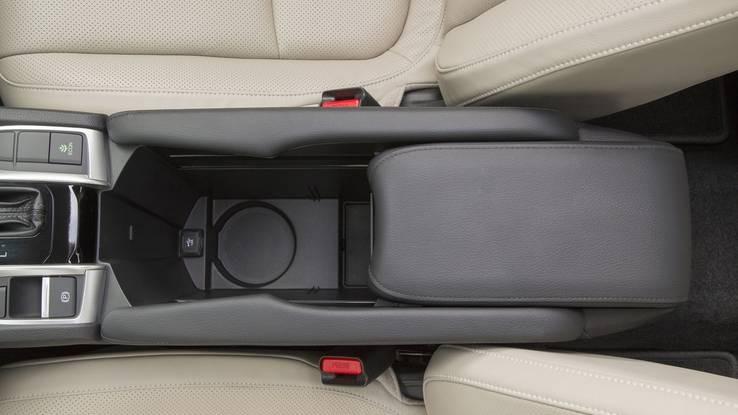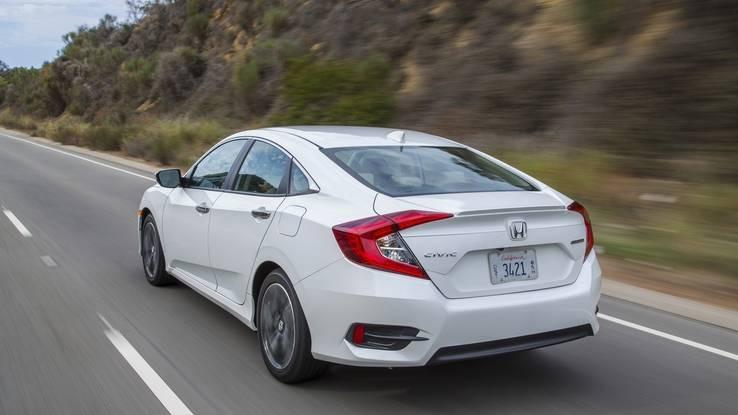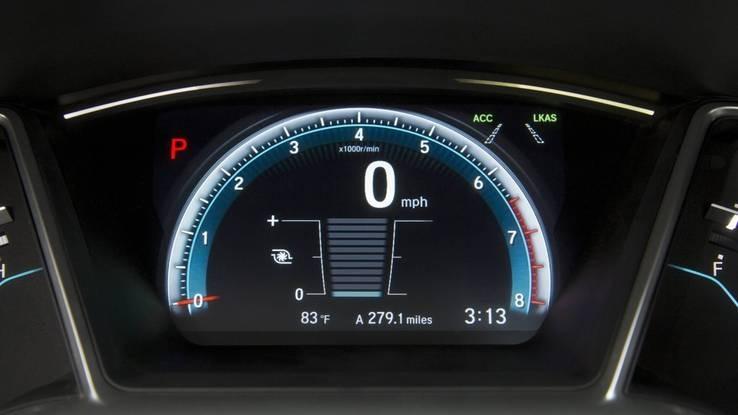The epic civic for the world
What is it?
This is the Honda that might ruin long-term fans appreciation of the mark, but will surely inspire new fans. Honda has finally stepped into the turbocharger ring, and we doubt they’ll ever go back to the world of natural aspiration.
Honda took a broader approach with this generation of Civic than the last. Instead of trying to build a car that would excel in North America, they went with a global platform for world domination. For 2016, Honda set its benchmarks for the Civic at the level of European luxury sedans from BMW, Audi, and Mercedes-Benz. Admittedly, that’s a pretty lofty goal, and at the price point of the Civic, you shouldn’t really expect to get the same performance and comfort out of a car that is tens of thousands of dollars more expensive—but you will get a reliable, comfortable and cost-efficient car that has a ton of utility. This is something that you can always expect out of a Civic–some things never change.
For 2016, Civic sedans get two engine options: either a naturally aspirated 2.0-liter I4 making 158 hp, or a turbo-charged 1.5-liter I4 pumping out a healthy 175 hp at 5500 rpm. The engine option is basically decided at the trim level, with the LX and EXs powered by the 2.0-liter, while the LX-T, EX-T and Touring editions come equipped with the 1.5-liter engine. The 2.0-liter engine with a manual transmission is able to sip fuel at the rate of 27 mpg city, 40 mpg highway and a combined fuel economy of 31 mpg. The turbocharged 1.5 with the CVT does even a little bitter with 31 mpg city, 42 mpg highway and a combined 35 mpg.

The 2016 Honda Civic is the most aggressive looking sedan yet, with its swept back headlights and aggressive looking front bumper.
The interior on the base LX feels a little cheap considering the angle of premium luxury at entry-level pricing. The materials on chosen for the dash, assorted interior trim pieces, arm rests and the center console all feel like they were designed for a car that costs less than 20k, which is fine considering that is what this car is doing—but not living up to the expectations that Honda says they placed on themselves.
On the other hand, the top-tier Touring model does live up to the hype: it feels as nice as any Acura sedan. The interior is clad with soft-touch materials throughout. Honda also did away with a traditional emergency brake, replacing it with an electronic unit that seems to work just as well while also allowing for a massive center console. No handbrake means no handbrake turns. Bummer.

The 2016 Honda Civic sedan did away with a traditional parking brake in order to free up some interior space–and it did just that. The new Civic has a center console big enough to stash away an iPad.
Honda says this Civic is the safest yet—thanks to the use of high strength steel and specially engineered crumple zones, this civic is both rigid and capable of safely crumpling on impact. Thanks to weakening certain areas of the high strength steel structure with heat, Honda managed to use mostly high strength steel for the structure of the car, without being forced to use mild steel in crumple areas. This should allow for the maximum structural rigidity, as well as somewhat predictable damage on collision, at least that’s what Honda says. Honda also engineered two panels behind the engine cradle, on the bottom of the car, that flip down when the cradle is pushed back during head-on collisions—providing more energy absorption.

The 2016 Honda Civic sedan has an array of different steels used in the structure, but the majority is high strength.
What’s it like to drive?
The torque converter equipped CVT provides smooth, linear acceleration. Hell, we’ll be frank—this thing hustles. The CVT manages to keep the inline four at near peak boost under hard acceleration, and it’s out of its own way in a hurry. The 2.0-liter isn’t as exciting to drive, but it also feels more powerful than 158 hp sounds on paper. The big advantage of the 2.0-liter engine is that it is available with a manual transmission, whereas the 1.5-liter turbocharged engine is not — yet. We’re speculating that certain coupe models might have a manual transmission version – but only time will tell. When cornering, the Civic is fairly stiff and capable of more aggressive turning than you will probably ever need out of an entry-level sedan.
There isn’t a ton of turbo noise with the 1.5-liter engine. No shh-pssh when you get out of boost and no spooling whine. So don’t expect to strike fear into the hearts of street racers—its just a sedan after all. Hopefully we’ll get a little bit of noise out of the Type-R
Besides power plants, the different trim levels steer, stop and handle just about the same—because they’re all equipped with the same suspension, steering, and braking components.
Honda chose to use an electric dual-pinion rack with a variable steering ratio to provide more road feel. Lock-to-lock takes two and a quarter turns, but the Civic sedan manages a good 35.7-foot turning radius.
Stopping power is provided by discs all the way around and the car stops well. The brake pedal feels a little spongy, but the pedal stroke is relatively short.
The passenger compartment is surprisingly quiet. Honda went overkill on the sound deadening and weather-stripping to seal this car up like a luxury sedan.

The cabin of the new Civic is needle-drop quiet. The downside of that is no turbocharger noise, but we didn’t expect much on the sedan anyway.
The suspension carries some serious improvements over previous generations, but also creates some points of contention with Civic enthusiasts. A MacPherson strut suspension up front and a redesigned multi-link suspension takes care of the rear. Civic enthusiasts don’t seem excited about another era of MacPherson Strut front suspension, but they shouldn’t be too upset—the civic handles well. The lack of negative camber from the MacPherson struts shouldn’t be an issue on the street, and the new Civic is pretty stiff in the corners. Despite being stiff, the Civic it also smooth and comfortable when you’re just trying to commute. Honda claims that this is because of new hydraulic bushing technology and it seems to work well.
Blind spots don’t really exist in the new Civic sedan. A quarter window behind the rear doors helps when looking over your shoulders, and with the standard equipment back up camera and blind spot camera—blind spots are not an issue.
The gauge cluster is digital and on startup flashes the Honda logo, then the speedometer sweeps it away—it’s pretty Tron, but we like it. The turbocharged models, there is a boost gauge inside of the speedometer, which isn’t really necessary on a car like this—but it still looks cool. Like the rest of the Honda fleet, there are lights in the cluster telling you how efficiently you’re driving — they light up green when you’re getting optimum fuel economy and white when you’re sucking gas.
The infotainment system hasn’t changed much on the user side of things, besides the inclusion of Apple CarPlay and Android Auto. The Android and Apple skins come standard on all trim levels besides the base LX, and were implemented really well. Due to the lack of Android phones, we could only test the CarPlay side of things, and it booted quickly and didn’t lag. The advantage to using Android Auto is that Honda somehow managed to make the infotainment screen look like a massive Samsung phone laying on its side.

The boost gauge isn’t really necessary on a sedan like this, but it certainly does look cool!
Do I want it?
It’s hard to not want it—and that has been the case for the Civic since the 90’s. If we were looking for a low priced sedan, this would be at the top of our list.
The In the loaded Touring trim, it’s as nice as any Acura we’ve seen, and certainly lives up to the task of building an entry level sedan at the luxury level.
That doesn’t mean that the new Civic is perfect—the sloping top creates some interior space issues for anyone over 6-feet tall, and the manual transmission isn’t available with the 1.5-liter turbo. Still, this is probably the best Civic to date in regards of comfort, power and safety, and with base models around $ 19, 465, it will be worthy of at least a look—if not a drive home.






























